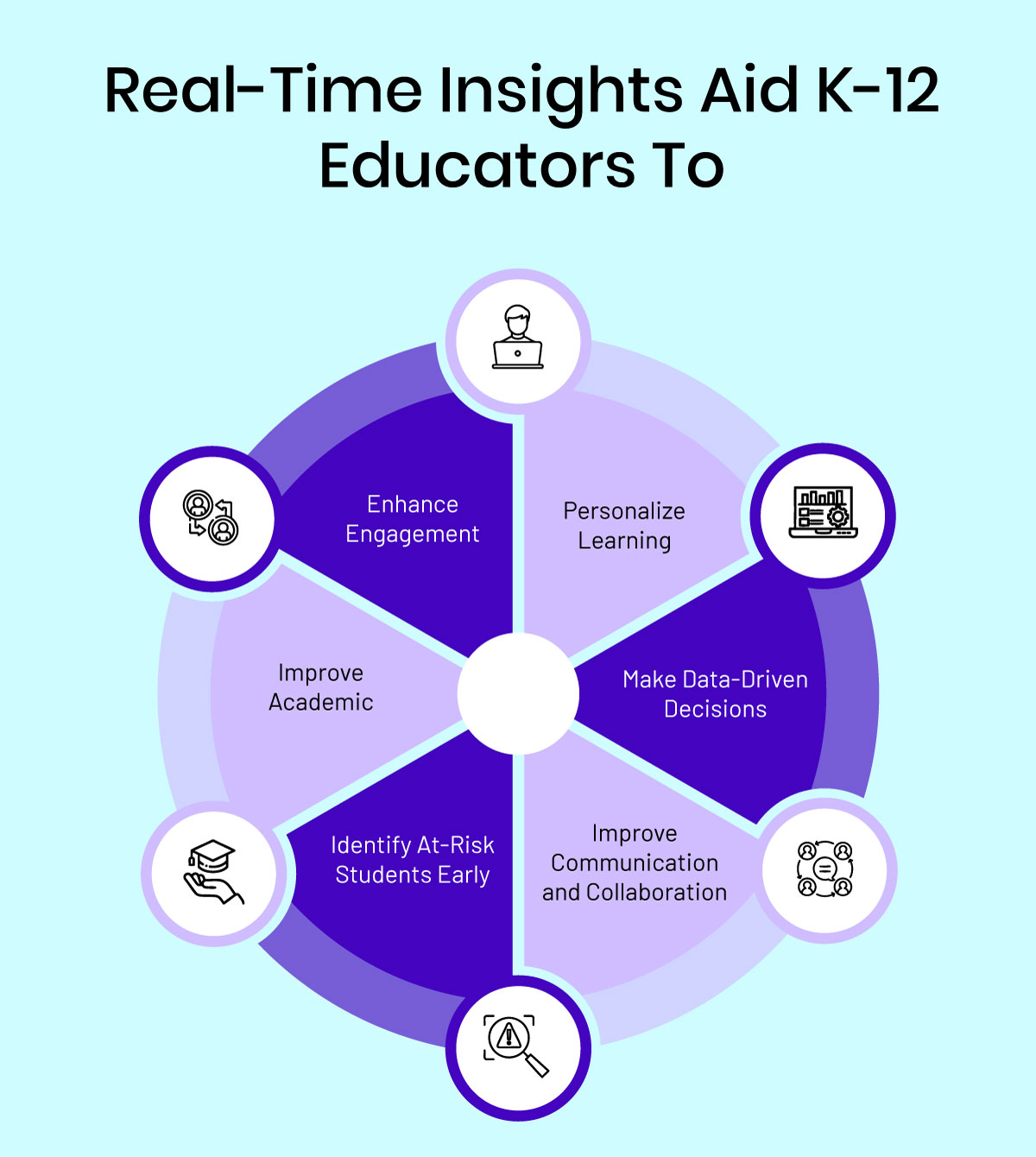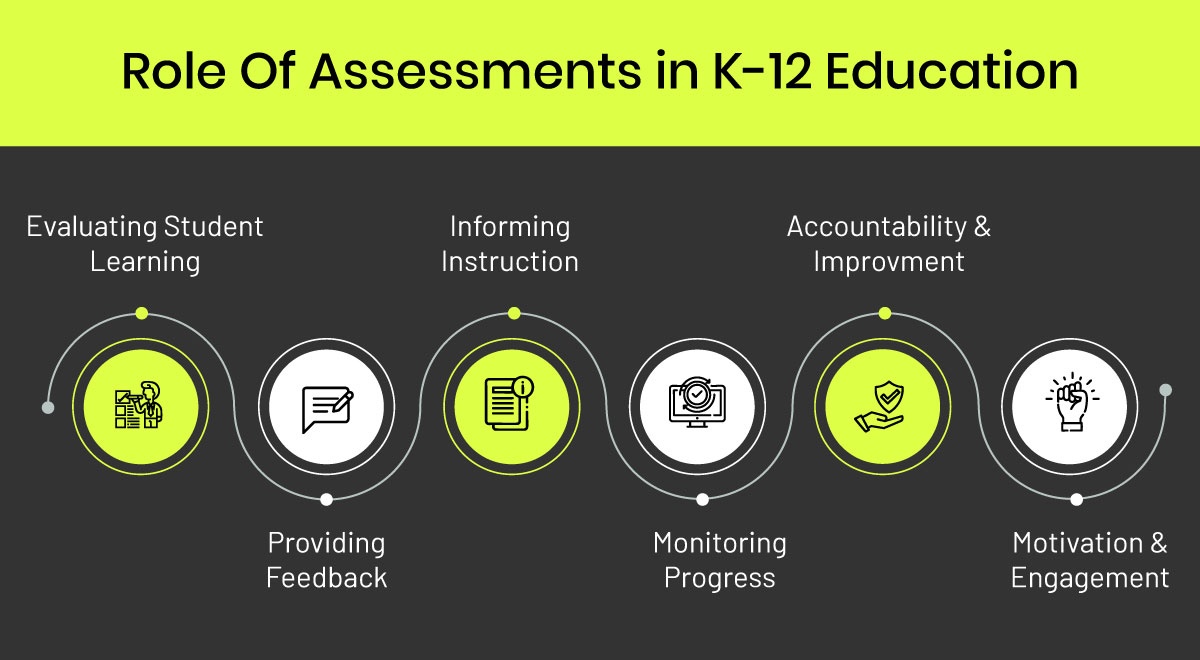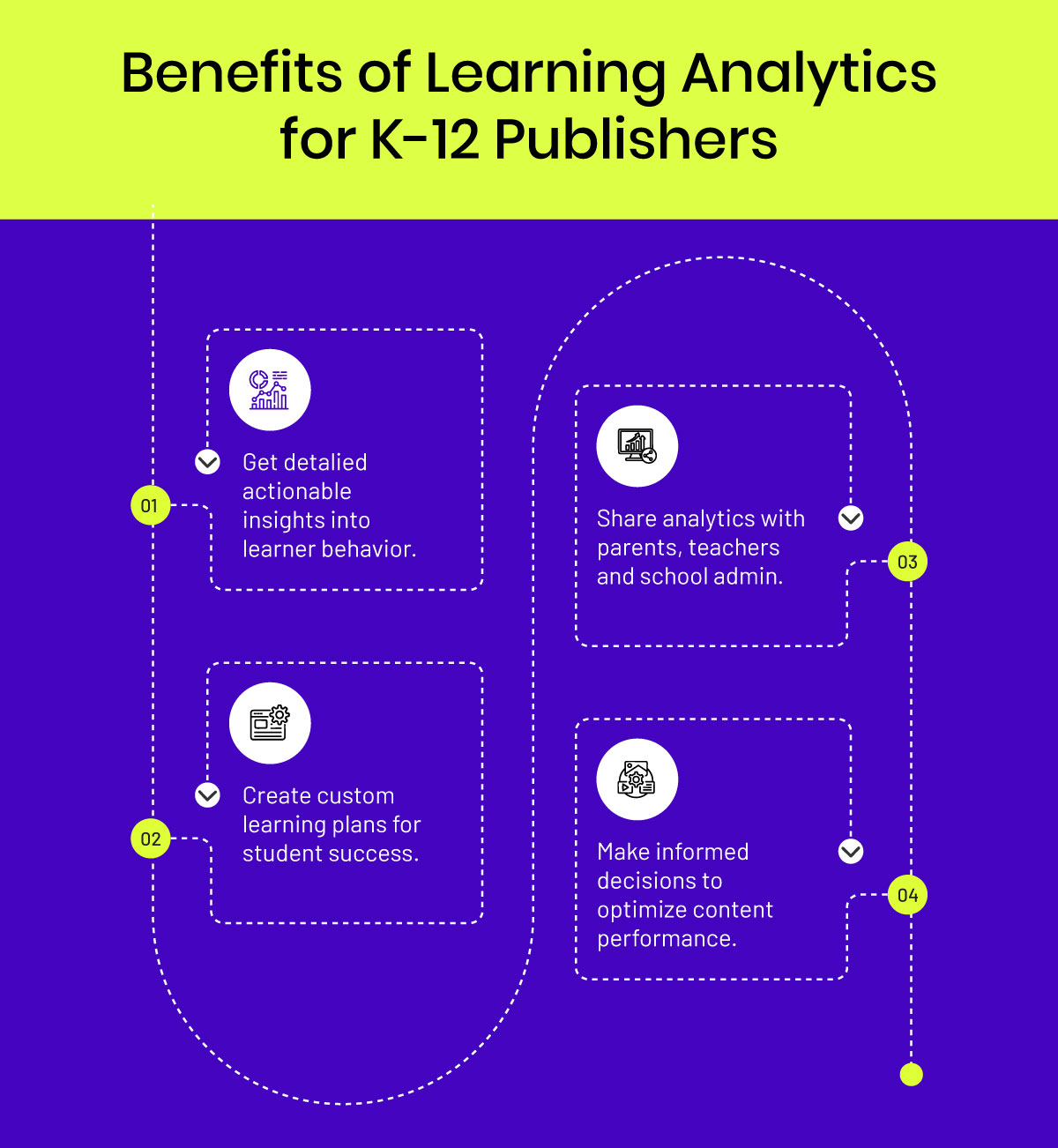
Building personalized learning paths can be a tough task when every class is characterized by students from varying cultural backgrounds with different learning styles, paces, and preferences. While a lot has been said about the role of digital learning platforms in personalizing education, the platform requires data analytics capabilities to do so. Unfortunately, there is an overwhelming amount of data available with schools and districts. The problem is compounded by this data being siloed across different and incompatible systems.
This is where K-12 publishers can play a crucial role in powering schools and educators with real-time insights to make data-driven decisions and improve student outcomes. Learning analytics is one of the most important applications of AI in education, allowing the tracking of student learning progress in real time to help educators identify learning gaps and adjust instruction accordingly, leading to more effective teaching and higher student achievement.


The Power of Data-Driven Learning
The learning analytics market is expected to reach $67868.4 million by 2030, expanding at a CAGR of 24.70% from 2024. There are multiple reasons for this explosive growth. Firstly, real-time analytics provides educators with immediate feedback on student engagement, performance, and areas of difficulty. This allows educators to identify struggling students early, create personalized learning paths, and provide targeted support before they fall behind. Tailoring instruction to individual student needs and interests increases student engagement and motivation.
Tracking student learning also empowers schools, districts, and policymakers to make informed decisions about curriculum, instruction, and resource allocation, based on real-time data rather than relying on intuition or delayed assessments. For instance, real-time analytics can provide valuable insights into student needs and learning patterns, which can inform schools to allocate resources to ensure that all students receive the support they need. Real-time data can also be used to identify areas for improvement in curriculum, instruction, and other aspects of the learning environment.
In addition, digital learning platforms ease the administration of formative and module-based assessments, allowing continuous tracking of student learning progress. And when the platform is powered by AI, students can receive real-time feedback to improve their performance. These metrics can also be shared with parents, so foster a collaborative approach, which is proven to enhance learning outcomes. In fact, according to Dr. Brian Cunningham, Principal, West Junior High School in Oakland, TN, “When teachers and parents work together effectively, students are more likely to achieve higher grades, have better attendance, exhibit positive behavior, and develop a strong sense of self-esteem.”


The Power of a Digital Learning Platform in Enhancing Student Tracking
MagicBox™ is an award-winning content creation and distribution platform that leverages the benefits of AI in education to offer real-time learning analytics. The analytics help track learners’ needs to give detailed insights into the learning progress of individual students and identify learners who need additional support. The insights can then be used to craft personalized learning paths to meet individual learner needs.
In addition, MagicBox™’s user-friendly digital assessment solution makes creating, managing, and grading assessments effortless. It offers a wide range of tools, including standards-based assessments, game-based assessments, and personalized assessments, for deeper learning insights. Educators can access detailed reports on student learning progress, which can help them enhance learning experiences and offer more targeted support. Plus, the detailed reports provide real-time insights into individual student, class, school, and district performance to optimize engagement and learning outcomes.
In addition, such outcome-based analytics help identify knowledge gaps and provide insights into remediation and corrective actions to improve academic performance. K-12 publishers can differentiate themselves by using such analytics to:
- Identify the most popular content types, such as video, audio, images, or text.
- Track how much time each student is spending on specific content.
- Develop effective training programs for teachers and staff.
- Identify the devices used to access content, allowing for optimized content delivery.
By leveraging analytic insights, educational publishers can make strategic decisions regarding learning materials that improve student understanding and knowledge retention. This, in turn, can help them drive adoptions across schools and districts.


A Win-Win for Publishers and the Education Sector
Integrating AI and learning analytics into existing digital learning platforms becomes effortless when you choose the right tools. MagicBox™ not only eases integrations but also syncs with the LMS platform to streamline the monitoring of student learning progress. K-12 publishers can use the scalable and flexible platform to track engagement and ensure content effectiveness. By offering the power of real-time tracking, they can also empower educators with actionable insights to improve academic outcomes. And they don’t need to worry about data privacy regulations since MagicBox™ ensures compliance with FERPA, COPPA, GDPR, WCAG 2.0, SCORM, TinCan or xAPI, and more. This means that the path to global expansion is also simplified.
Ready to power your organization with the power of real-time analytics? Speak to the experts at MagicBox™ today.



